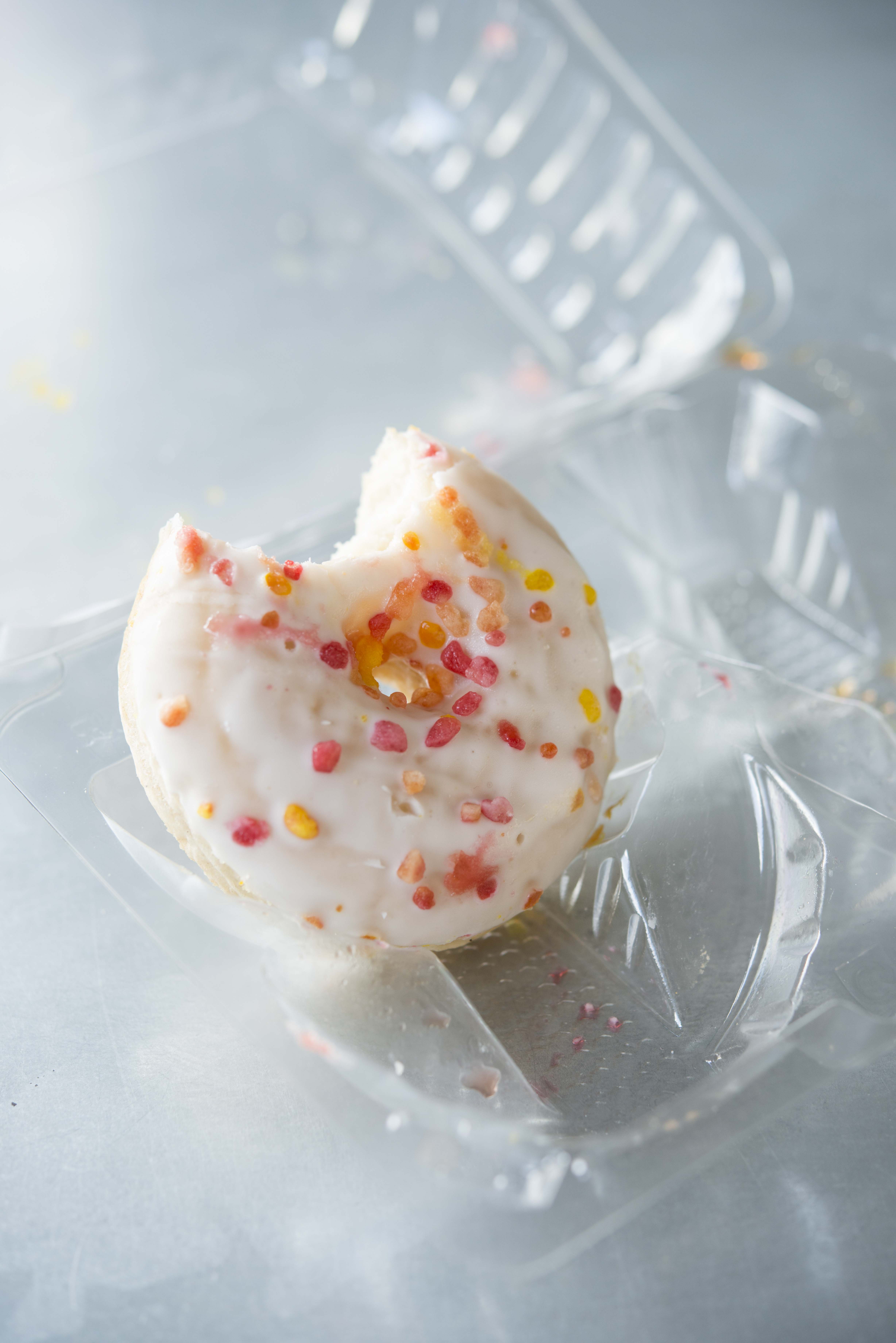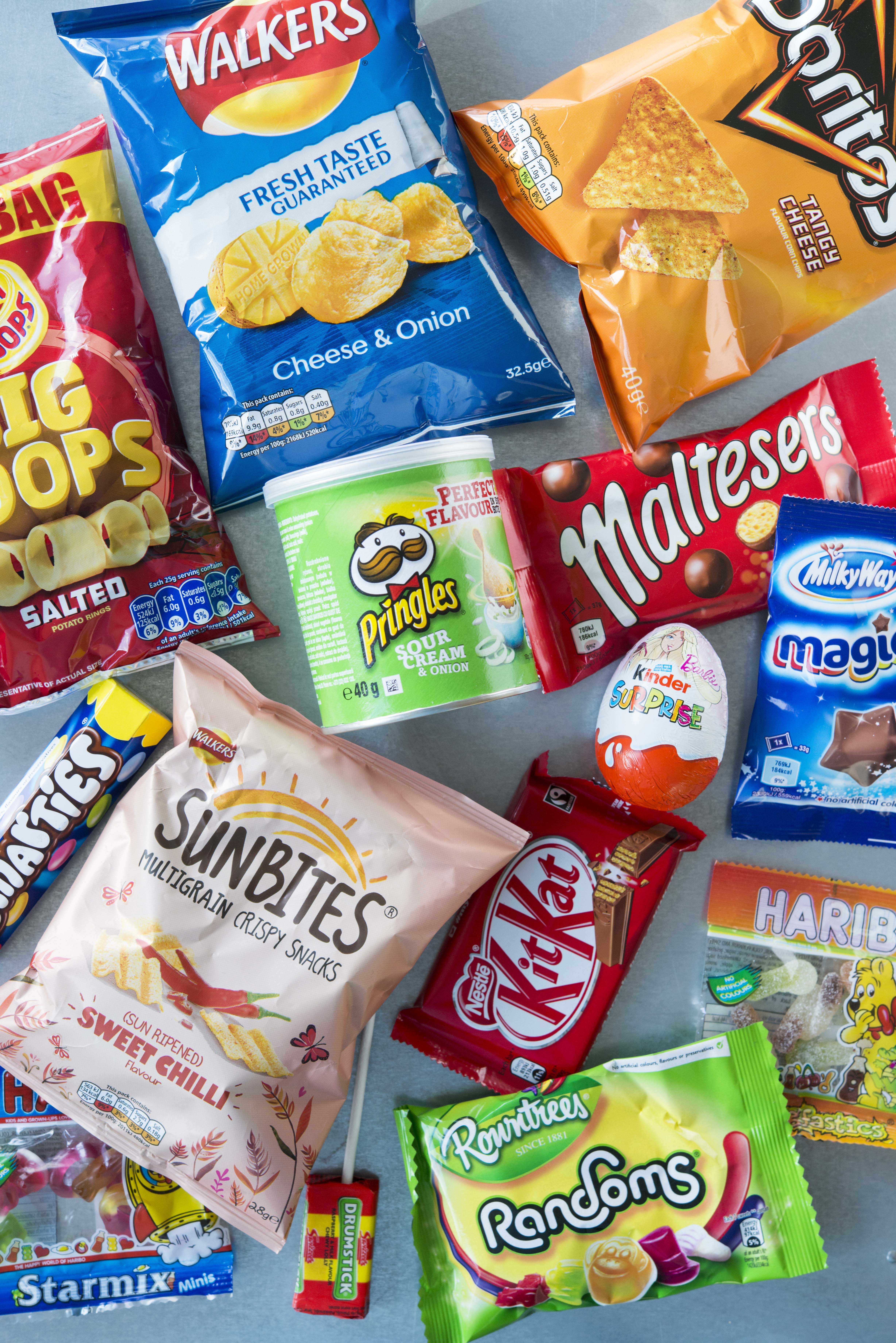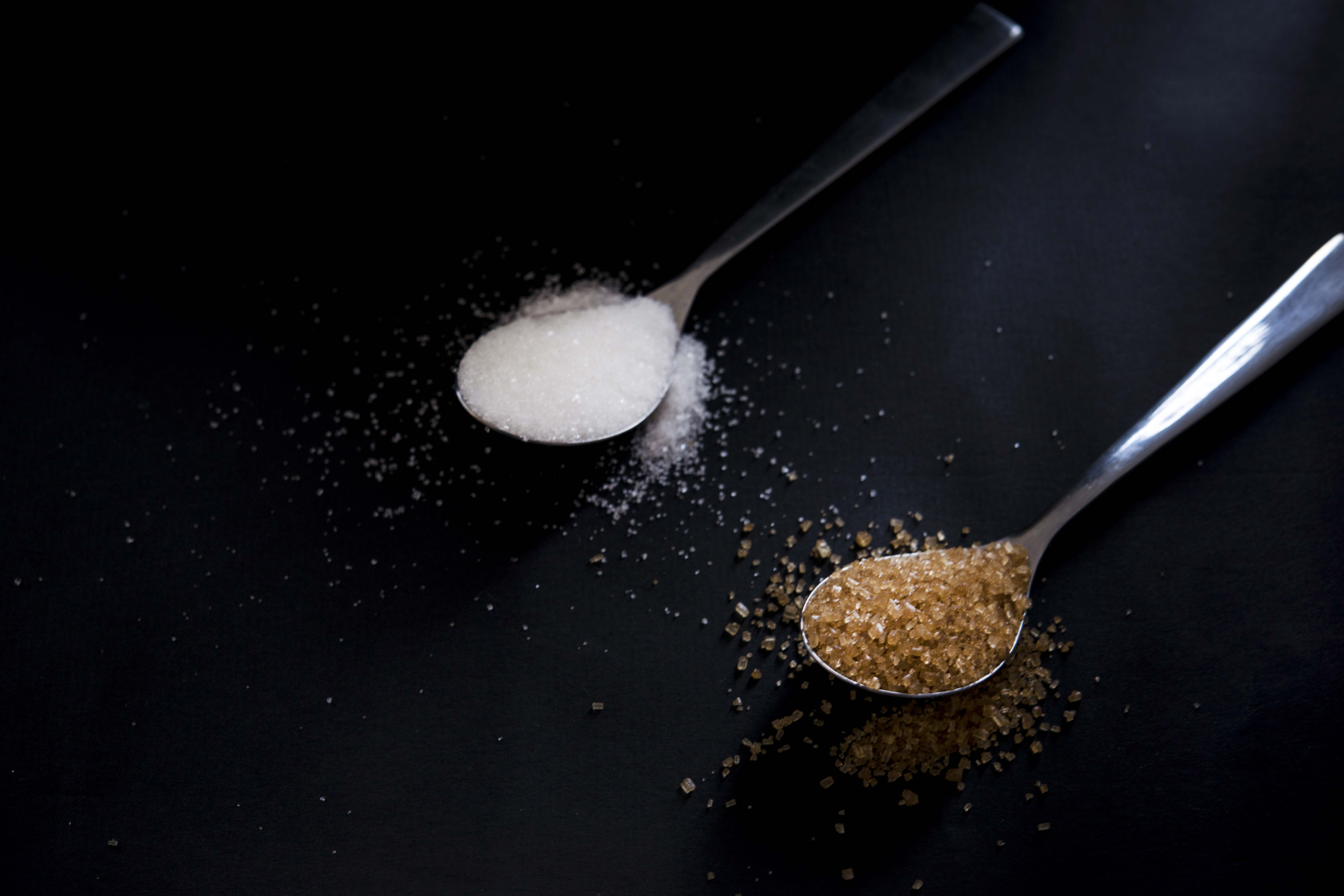Sugar….the White Devil?
When we talk about sugar, we talk about sucrose, our table sugar; But when we talk about sugar, we also talk about power, migration, slavery, medicine, and nutrition. Sugar is our body’s fuel, the energy of life, but as it turns out also a great danger to our health. What is it that is so special about sugar that despite all of its flaws, we still can not live without it?
Humans are born with the tendency to love sweet things; it is not a fluke that we have 10,000 receptors in our mouth for sweetness. Either because we are consuming lactose, the sugar found in milk, since the moment we are born and breastfed or because it is in our nature to look for the sweet sources of energy around us; anyway we love sweet things.[1]
Sweet foods light up the brain’s pleasure center, releasing beta-endorphins, same once released by love; that explains why chocolate became so famous for Valentine’s day and the reason why people are turning to sweets for comfort.In the past, we were consuming sugar from fruits and vegetables in small quantities on rare occasions. Sugar was coming together with vitamins and nutrients, something that the sugar we are consuming today is lacking. It was a time when sugar was sweet and not hidden in our foods.
“As for sugar, it was transformed from a luxury of kings into the kingly luxury of commoners,” Sidney Mintz.[2]The growth in sugar consumption was part of a more significant change in the global diet, as it became more starch-centered, and we became more materialistic. The obsession of quick fixes of sugar also became an obsession with quick fixes of life, as sugar by its nature is immediate and hyper.[3]
When obesity became a worldwide epidemic, we couldn’t resist it anymore – there is a problem in our diet, and there is an excellent chance that sugar has something to do with it. We are blaming the western diet and trying to count calories and eat low-fat products to stay slim; we are not enjoying food anymore; our eating became scientific. We are putting more effort into talking about nutrition and calories than enjoying our meal. But does it make us healthier?
Let’s dig in.
Sugar, or sucrose, is a carbohydrate found in fruits and vegetables.[5]In its highest concentration, it is found in the sugarcane and beet plants, and this is what our table sugar is made of.[6] But it is also found in milk (as glucose and galactose), in beer as maltose and of course in most of the processed foods we consume today.
If in the past sugar was produced in grain mills, today it is the product of large-scale refineries. All sugar products on the market are refined, differ in color and sucrose percentage in the range from 96% sucrose in brown sugar to 99.9% sucrose in white granulated sugar. The brown sugar is sugar crystals in a specially prepared molasses syrup with controlled natural flavor and color components. Other specialty products are Turbinadosugar; a light tan washed raw sugar, or Demerarasugar, a golden-colored specialty sugar.[8]
Taking a ride through the pages of history.
Only a few centuries ago, it was equally challenging to imagine a world with sugar as it is now hard to image the world without it. When sugar was first introduced to Europe, it was already widely used in the Arab world. Entering the European market, it was considered a symbol of power, affordable only to the rich.
Five main uses can relate to sugar – as a medicine (treating fever, dry coughs, pectoral ailments, and chapped lips); as a spice (used to add flavor to non-sweet foods); as a decorative material (mixed with other materials, shaped, colored and displayed before eaten); as a sweetener and a preservative (coating fruits and medicine).
Starting as an exotic luxury and transformed into a proletarian necessity, sugar was one of the first imports to take a new political and military importance to the broadening capitalist classes of the metropolis.
Sugar as a sweetener spread out with three other critical exotic imports – tea, coffee, and chocolate; none of which were sweet in their origin countries. The use of sugar also grew in the consumption of different pastries eaten with the hot beverages instead of bread; those baked goods started to appear in British cookbooks since the 15th century, introducing a sweet course to the menu.[9]
Sugar became a mass product with the development of the sugar industry which started to produce different candies, confectioners, toffees, chocolate bars, breakfast cereals, and baked goods like biscuits, cookies, cakes, doughnuts, ice-cream, sugary beverages and energy, and sports drinks. What contributed to the success of sugar was its ability to be used with other substitutes as water, receiving a pleasant juice or a frozen sherbet, creams mixed with milk, liquors mixed with alcohol and jams mixed with fruit.[10]
The winds of change.
The rise in sugar consumption followed a more significant change in society, the growth in outdoor consumption. At the same time, there was an increase in consumption of pre-paired, pre-cooked frozen foods at home, different time-saving practices to which we can refer as a general increase in “junk food” consumption.[11]Maximum enjoyment in minimum time led the consumers to eat while they are walking or working, to drink while they are driving and while watching television.[12]
Sucrose was fitting perfectly into this reality, offering the consumers frozen milk products, baked goods, soft drinks, and a meal like snacks. To make those processed foods palatable sugar was added to almost everything and its characteristics as giving texture and body to foods and drinks, shelf life to baked goods, stabilization to chemical procedures and medium to yeast, all together made sucrose as the perfect substance of the modern kitchen.
The first concern about the health effects of sugar was dental care. Historians noticed that the teeth of Queen Elizabeth were completely black and in the 16th-century concerns started to appear warning children to beware of sugar. In the 19th century, medicine began to worry about sugar, especially its effect on hypoglycemia (levels of sugar in the blood). Researches started to connect diabetes, heart diseases, obesity, and other chronic diseases to sugar.[13]
Those concerns contributed to the development of non-caloric artificial sweeteners. The first one is Saccharin, white crystallized powder, banned for consumption after studies found its connection to cancer. Calcium Cyclamateis another sweetener which was found carcinogenic and was banned for use. Within a couple of years, Steviaentered the market, a natural sweetener with a bit of an aftertaste. [14]
Other popular sweeteners likeAgavealso contain a high percentage of fructose. Maple syrupalso includes 66% sucrose and Coconut sugar, that became the favorite of the healthy foodie movement contains 70-79% sucrose but also contains fiber, antioxidants, and minerals. [38]
Is the devil so bad?
When we consume sugar, we have glucose and fructose introduced to our body. Whereas glucose is metabolized directly by the cells, fructose needs to be metabolized by the liver. Researches show that when significant quantities of fructose are hitting the liver, it will convert them to fat. It’s called insulin resistance, a condition that can farther develop to obesity,heart disease, type 2 diabetes, and even cancer. In its liquid form, it rushes the metabolic process, even more, creating stress on the liver.
By raising blood levels of triglycerides, sugar consumption creates a risk for heart diseases. It puts in danger brain functioning,[16]and could cause a fatty liver condition. Gout, candida, and kidney failure are only a few of the diseases related to sugar consumption.[17]Besides, unlike glucose, fructose does not stimulate theLeptinproduction in our brain, and the signal to our body to stop eating is not working.[20][21]
One of the biggest problems of the western diet is hidden sugars, using the bliss point[25]the industry is deciding on the amount of added sugars in our products. By consuming more processed food, we add more fructose to our diet. Sugar is tricking our body to think it got the nutrients it needs, and instead of achieving a balanced diet, we eat much more than we need.
Sugar is a substance that activates the release of opioids and dopamine the same way as addictive drugs do; as such, it is expected to have addictive potential. In the past, sweet items in nature were considered rare, and we as humans developed the urge to have them immediately as we see them. Our brain relates to those items as a reward, releasing opioids and beta-endorphins that make us feel amazing; creating the same reaction as nicotine, cocaine, and sex. As the levels of sugar in our blood are not persistent, we have mood swings.[27]This desire may go awry, and certain people, including some obese and bulimic in particular, may develop an unhealthy dependence on sugar. Many people claim that they feel compelled to eat sweet foods, similar in some way to how an alcoholic might feel forced to drink. [28]
It is and always was about quantities. The suggested amount of sugar consumption per person a day is 200 calories (around 18 kg per year), which is less than a can and a half of Coca-Cola. At the same time, the average consumption in the US is almost 16 kg more than this limit. The largest source of added sugars in the western dietare sugar-sweetened beverages (SSBs), accounting more than 10% of the overall energy intake.[15]
True Story.
The strong sugar lobby has the power to shape the public opinion on sugar; If it is the fat hypothesis, which made all Americans consume low-fat products instead of paying attention to their sugar consumption,[29]or if it is by connecting the new non-caloric sweeteners to cancer.[30]For many years the industry blamed High Fructose Corn Syrup as the unhealthy substitute of sugar, while chemically there is no difference between the two and their effect on our body is similar. These strategies show remarkable similarities to the tactics previously used by the Tobaccoindustry, and even today, while the question of the sugar tax is in the headlines, Coca-Cola is funding researches to take the blame away from sugar. [31][32]
When the sugar industry finally agreed that large amounts of sugar are harmful to the public’s health, automatically it disassociated their company’s specific products from the detrimental health effects. The contested issue of potential solutions and policy changes such as labeling, mandatory reformulation, and taxation will be the next step.[34]The health organization guidelines limiting sugar consumption to 5-15% and the legal actions taken to limit sugar-sweetened beverages in schools and the sugar tax are a good start.[35]
How little is still too much?
So is sugar that bad? I am not sure, as we have seen, it is hard to rely on nutrition researches without doubting their sources. Looking at the aborigine civilizations that adopted the western dietand became sicker, there is a reason to fear. Together with the French paradox, I do think that maybe sugar is the one to blame.
Taking into consideration that the effect of sugar on our body will be reviled only with time, it is hard to answer the question of how little is still too much?If we are adopting the assumption that sugar is addictive, or as some researches suggest – poison, maybe none is the best.
I do have to say that imagining life without sugar can be exciting; no mood swings; eating healthy food and maybe even growing it yourself. It sounds like an ideal world, but until then I do think that by paying more attention to the amounts of sugar we are consuming and maybe cutting down those amounts step by step we can make a difference.[37]
I would love to finish with a sentence by the one and only, Michael Pollan, “Eat food. Not too much. Mostly plants.”;this is, in my opinion, the best advice for any diet.[40]
Sources and more reads for you to deep dive
[1]Smith, A. F. (2015). Sugar: A Global History. Reaktion Books.
[2]Mintz, S. W. (1985). Sweetness and power (p. 157). New York: Viking.
[3]Gameau, D. (2015). That Sugar Book: This Book Will Change the Way You Think about ‘healthy ‘Food. Pan Macmillan.
[4]Pollan, M. (2008). In defense of food: The myth of nutrition and the pleasures of eating. Penguin UK.
[5]The process used by plants and other organisms to convert light energy into chemical energy. The sugar association, retrieved from- https://www.sugar.org/23/04/17
[6]The sugar association, retrieved from – https://www.sugar.org/23/04/17
[7]Skil, sugar knowledge international, how cane sugar is refined – the basic story, retrieved from –
http://www.sucrose.com/lref.html23/04/17
[8]The sugar association, retrieved from – https://www.sugar.org/23/04/17
[9]Mintz, S. W. (1985). Sweetness and power (p. 157). New York: Viking.
[10]Brillat-Savarin, J. A. (2009). The physiology of taste: or meditations on transcendental gastronomy. Vintage.
[11]Junk food meaning calorie-dense processed foods, particularly sweets, salty snacks, fast foods, and sugary beverages that have little nutritional value other than calories. Used first in the 1970s. Smith, A. F. (2015). Sugar: A Global History. Reaktion Books.
[12]Mintz, S. W. (1985). Sweetness and power (p. 157). New York: Viking.
[13]Smith, A. F. (2015). Sugar: A Global History. Reaktion Books.
[14]Mintz, S. W. (1985). Sweetness and power (p. 157). New York: Viking.
[15]Sugar, B., & Achard, F. C. Sugar, granulated.
[16]Agrawal, R., & Gomez‐Pinilla, F. (2012). ‘Metabolic syndrome’ in the brain: deficiency in omega‐3 fatty acid exacerbates dysfunctions in insulin receptor signaling and cognition. The Journal of Physiology, 590(10), 2485-2499.
[17]Gameau, D. (2015). That Sugar Book: This Book Will Change the Way You Think about ‘healthy ‘Food. Pan Macmillan.
[18]A condition when the cells in our body are actively ignoring the action of the hormone insulin, technically called also insulin resistance. The body responds by raising the blood sugar and pumping out more and more insulin, arriving at the stage when the pancreas can no longer keep up with the demand and gives in, causing pancreatic exhaustion, a condition when the blood sugar is rising without control causing diabetes. Not every insulin resistance will cause diabetes, higher triglyceride levels, and blood pressure, lower levels of HDL cholesterol (the “good cholesterol”), further worsening the insulin resistance — this is metabolic syndrome. Taubes, G. (2011). Is sugar toxic? New York Times, 13.
[19]Lakhan, S. E., & Kirchgessner, A. (2013). The emerging role of dietary fructose in obesity and cognitive decline. Nutrition Journal, 12(1), 114.
[20]Ishimoto, T., Lanaspa, M. A., Le, M. T., Garcia, G. E., Diggle, C. P., MacLean, P. S., … & Rivard, C. J. (2012). Opposing effects of fructokinase C and A isoforms on fructose-induced metabolic syndrome in mice. Proceedings of the National Academy of Sciences, 109(11), 4320-4325.
[21]Bray, G. A., Nielsen, S. J., & Popkin, B. M. (2004). Consumption of high-fructose corn syrup in beverages may play a role in the epidemic of obesity. The American Journal of clinical nutrition, 79(4), 537-543.
[22]Taubes, G. (2011). Is sugar toxic? New York Times, 13.
[23]Edna Espig, C. N. A., Morillo, C. R., Bryant, E., Tech, E. E. C. P., & Ludahl, J. Sugar Toxicity The Silent Epidemic.
[24]Nguyen, S., & Lustig, R. H. (2010). Just a spoonful of sugar helps the blood pressure go up. Expert review of cardiovascular therapy, 8(11), 1497-1499.
[25]The bliss point is the necessary amount of sugar in a product; above this point, consumers will reject the product thinking it is too sweet and below this point, consumers will want more sugar. The personal bliss point is effected by sugar consumption. We will want sweeter products if we are used to consuming a lot of sugar. Ameau, D. (2015). That Sugar Book: This Book Will Change the Way You Think about ‘healthy ‘Food. Pan Macmillan.
[26]Moynihan, P., & Petersen, P. E. (2004). Diet, nutrition, and the prevention of dental diseases. Public health nutrition, 7(1A; SPI), 201-226.
[27]Gameau, D. (2015). That Sugar Book: This Book Will Change the Way You Think about ‘healthy ‘Food. Pan Macmillan.
[28]Avena, N. M., Rada, P., & Hoebel, B. G. (2008). Evidence for sugar addiction: behavioral and neurochemical effects of intermittent, excessive sugar intake. Neuroscience & Biobehavioral Reviews, 32(1), 20-39.
[29]Gameau, D. (2015). That Sugar Book: This Book Will Change the Way You Think about ‘healthy ‘Food. Pan Macmillan.
[30]Taubes, G. (2016). The Case Against Sugar. Portobello Books.
[31]The New York Time, coca-cola funds scientists who shift blame for obesity away from bad diets, retrieved from – https://well.blogs.nytimes.com/2015/08/09/coca-cola-funds-scientists-who-shift-blame-for-obesity-away-from-bad-diets/?_r=0 23/04/17
[32]Mail Online, Coca-Cola funded studies which ‘diverted blame for obesity away from sugar’ and pointed the finger at too much screen time and lack of exercise and sleep, retrieved from –
http://www.dailymail.co.uk/news/article-4351608/Coca-Cola-diverts-blame-obesity-sugar.html23/04/17
[33]Sugar, B., & Achard, F. C. Sugar, granulated.
[34]BMJ, Public health Research, Sugar-sweetened beverages coverage in the British media: an analysis of public health advocacy versus pro-industry messaging, retrieved from – http://bmjopen.bmj.com/content/6/7/e011295.full23/04/17
[35]Sugar tax is a tax introduced in different countries to reduce the consumption of sugary drinks. The tax was excepted is several countries such as the UK, Mexico, France, Ireland, Norway, some states of the US and more. It is currently an ongoing debate in South Africa and other countries. Escobar, M. A. C., Veerman, J. L., Tollman, S. M., Bertram, M. Y., & Hofman, K. J. (2013). Evidence that a tax on sugar-sweetened beverages reduces the obesity rate: a meta-analysis. BMC public health, 13(1), 1072.
[36]Taubes, G. (2016). The Case Against Sugar. Portobello Books.
[37]Gameau, D. (2015). That Sugar Book: This Book Will Change the Way You Think about ‘healthy ‘Food. Pan Macmillan.
[38]Gameau, D. (2015). That Sugar Book: This Book Will Change the Way You Think about ‘healthy ‘Food. Pan Macmillan.
[39]Mako news, Keshet, retrieved from – http://www.mako.co.il/news-israel/health-q2_2017/Article-35b64f41dbf3b51004.htm 23/04/17
[40]Pollan, M. (2008). In defense of food: The myth of nutrition and the pleasures of eating. Penguin UK.






